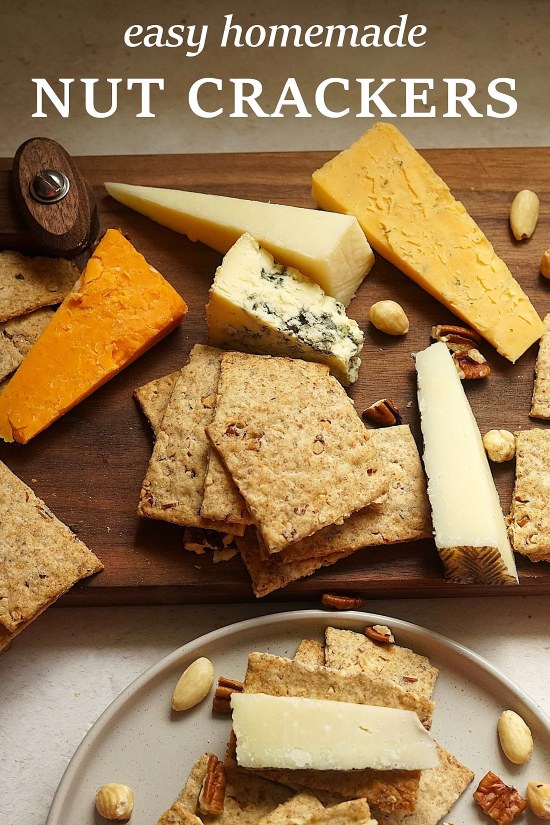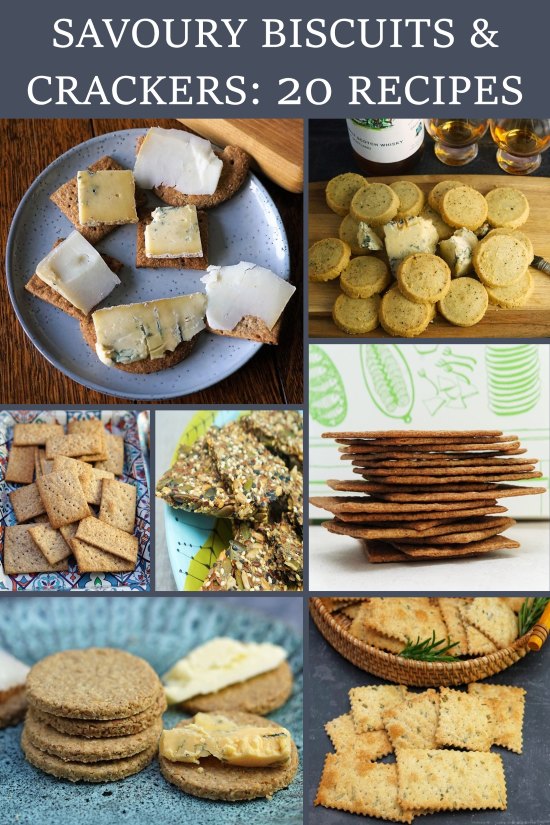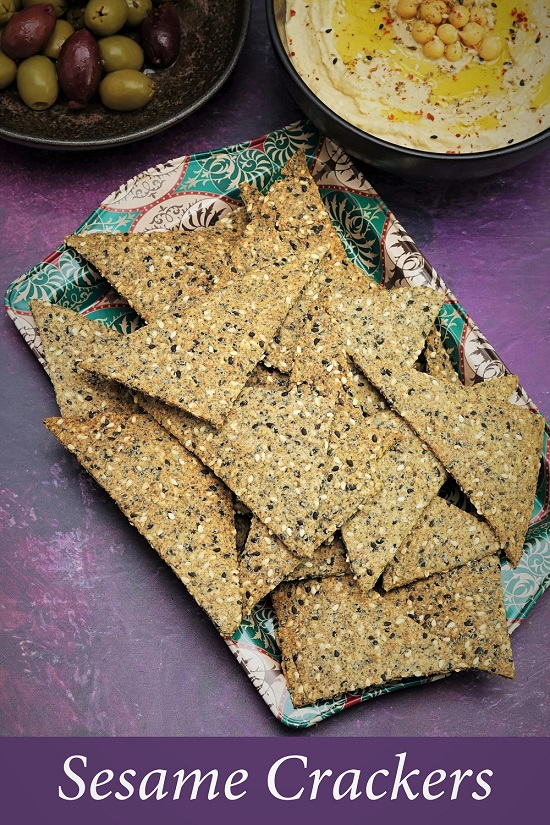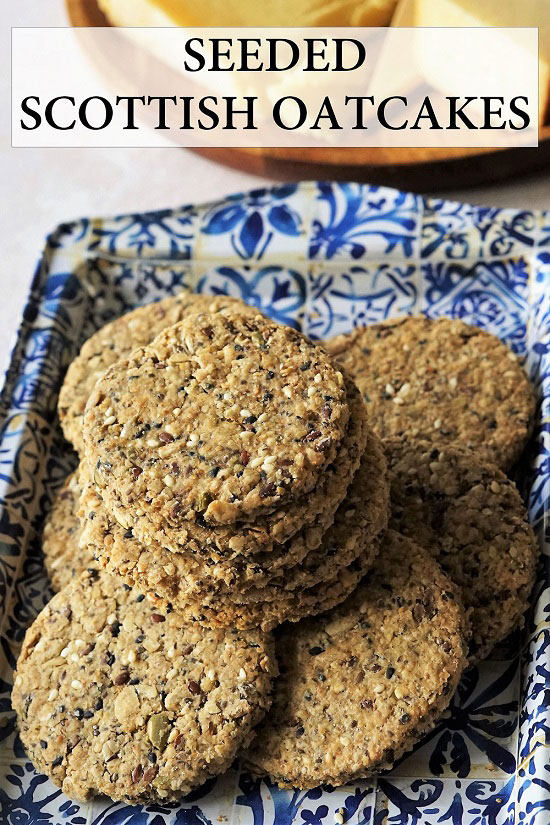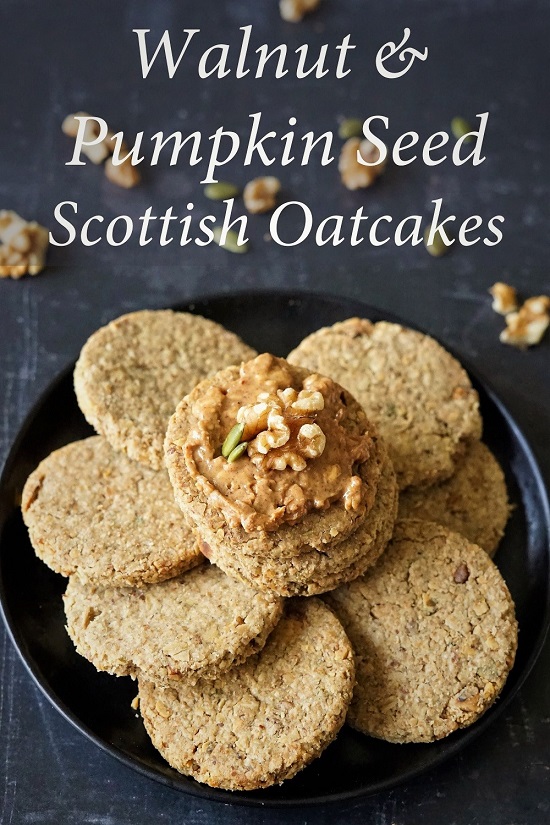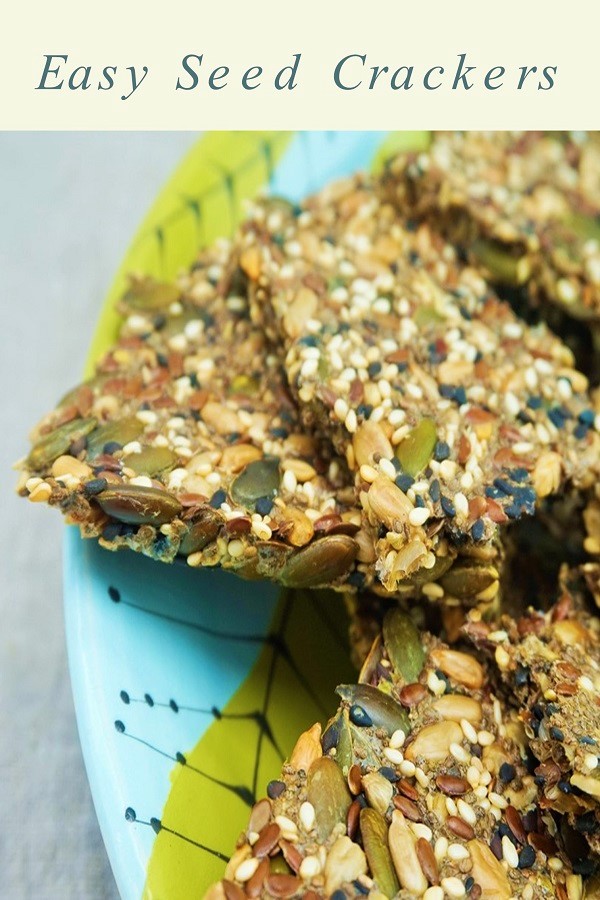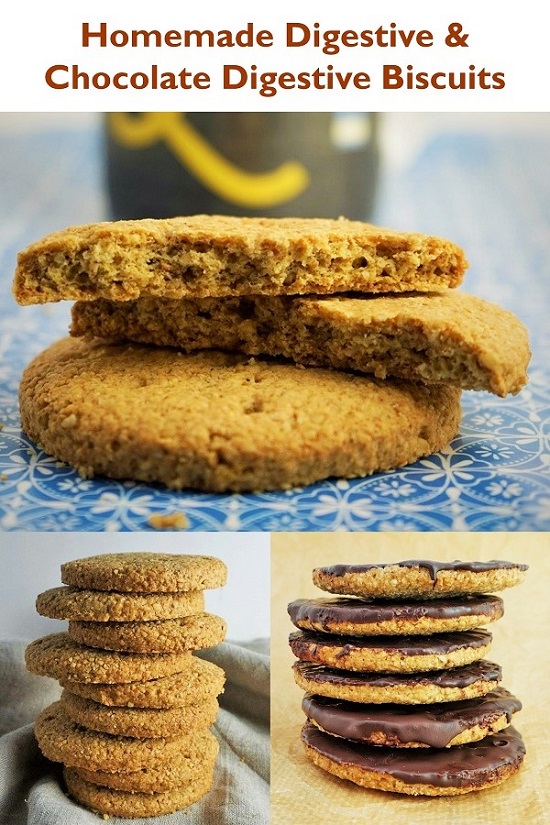Homemade Rye Crackers
Homemade Rye Crackers are thin, crunchy, and full of flavour. Inspired by Nordic knäckebröd, you can eat them as an open sandwich piled with tasty toppings, or enjoy as a simple cracker with cheese, pâté, dips, and savoury or sweet spreads.
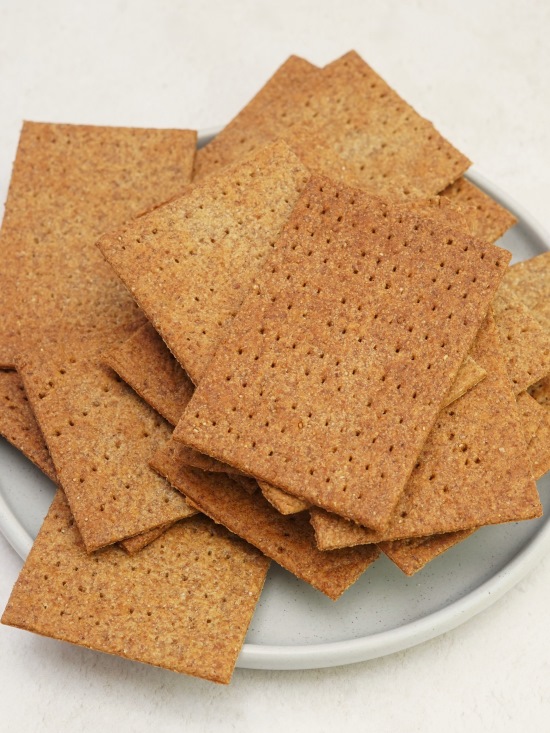
Jump to Recipe
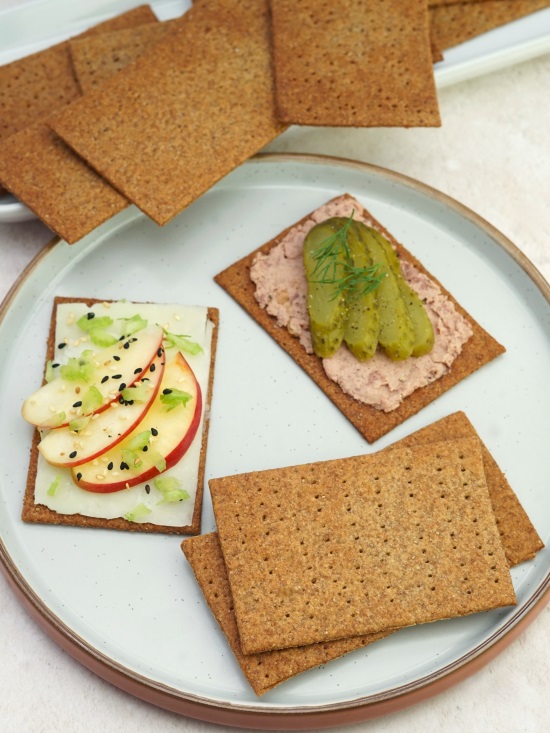
EASY HOMEMADE CRACKERS
Back in 2019 I discovered how simple it is to bake homemade crackers. So easy in fact, that I called my very first recipe Easy Homemade Crackers. For a basic cracker to eat with cheese, pâté, dips, and spreads, all you need are flour, salt, oil, and water.
From there, you can create an infinite variety of crackers by varying the type of flour and adding different herbs, spices, seeds etc. Two of my favourites are Rosemary Crackers and Cheese Crackers.
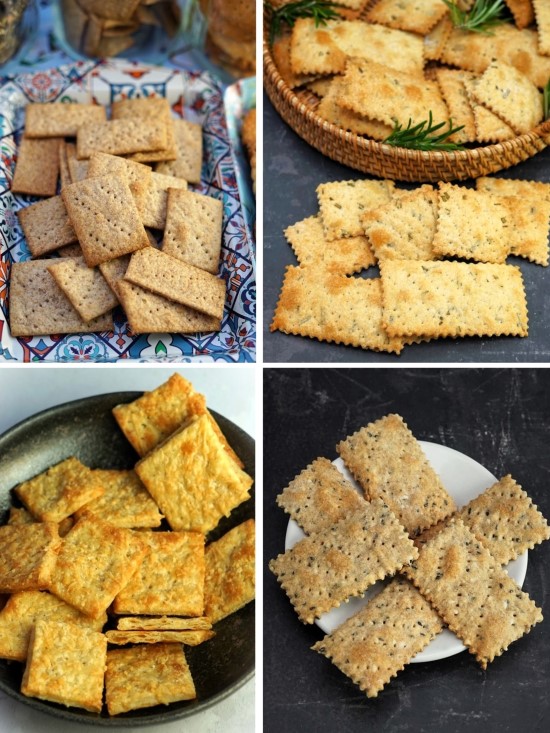
I think another of my variations, Rye, Spelt & Sesame Crackers, have a particularly good flavour. Earthy and nutty, they’re also light due to just over half the flour being white. However, I’ve been experimenting with adapting them into a cracker that’s still crispy and light but has more rye flavour. And I’ve finally cracked it – if you’ll excuse the pun.
My Rye Crackers are delicious, crisp and super-thin, in part inspired by the knäckebröd of Nordic countries like Sweden and Finland.
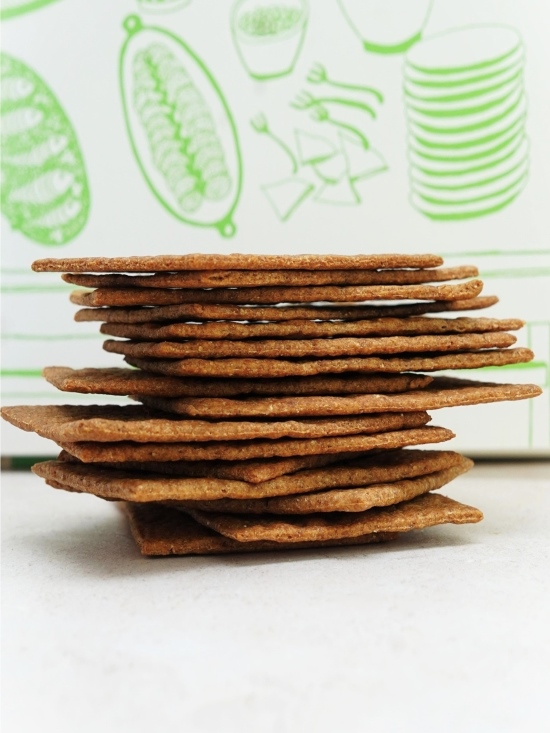
RYE BREAD & RYE CRACKERS
There’s no getting away from the fact that rye flour, on its own, makes for heavy baking. It’s often said that, unlike wheat, rye has poor gluten content. Others argue it does have reasonable gluten content, just not the sort that’s good for baking. But whichever is correct, it amounts to the same thing. Heaviness.
In developing my Nordic influenced Dark Rye Bread, I tackled this conundrum. What was the highest proportion of rye flour I could include for maximum flavour without the bread becoming heavy? The answer turned out to be seventy-five per cent. The result was a wonderful, full-flavoured, tangy bread. As expected with a dark rye, the texture was firm. Which made it perfect for what I wanted: cut thinly and loaded with tempting toppings for Smørrebrød: Danish-style open sandwiches.
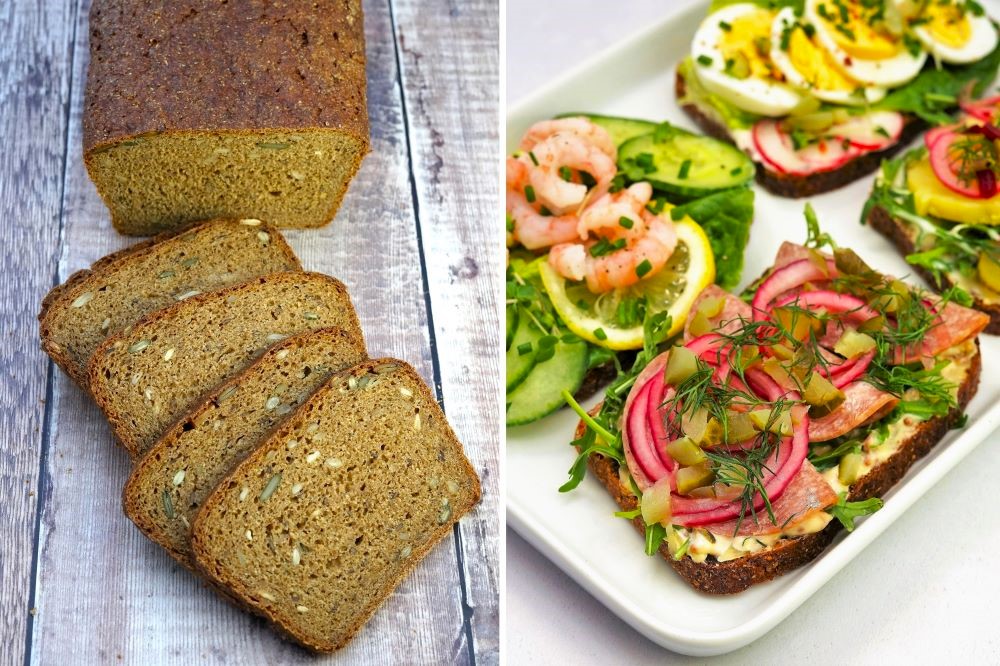
I love my Dark Rye Bread, but you do need to get started one or even two days before you plan to eat it. Firstly, there’s the initial overnight rise. Secondly, I highly recommend you mature the finished loaf for a couple of days before slicing into it. While the bread is certainly worth the wait, sometimes I want a quicker option.
So, I decided to use what I’d learned to make a cracker with that same high ratio of rye flour. As well as being suitable for the layered toppings of open sandwiches, I wanted it to go well with simple things like cheese, pâté, or even sweet things too. And I couldn’t be happier with the result.
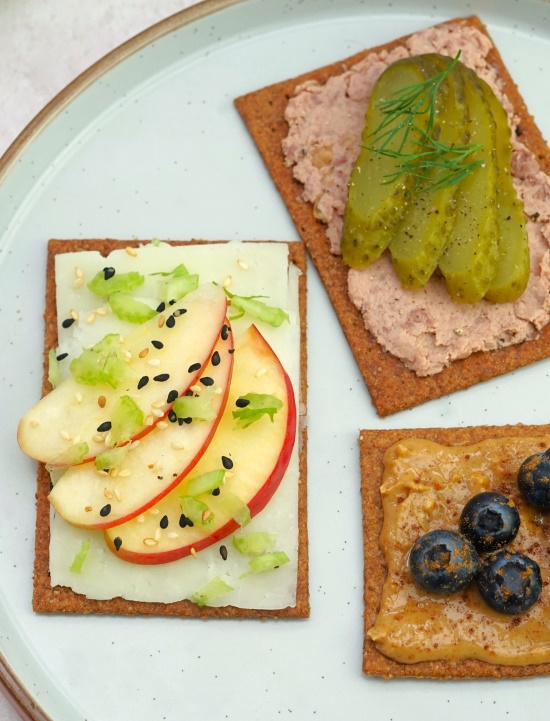
HOMEMADE RYE CRACKERS
The main difference between my Easy Homemade Crackers and Rye Crackers is the inclusion of yeast to give a little lightness. You should be aware though, that my crackers are not crispbreads like that famous, originally Swedish, brand. While those are very light and puffed up, mine (being in the style of knäckebröd which also sometimes contain yeast) are harder, crunchier, and much thinner.
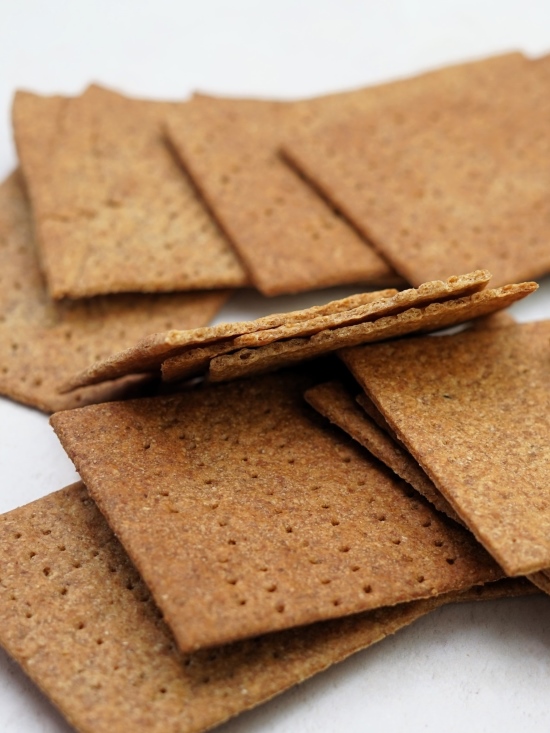
For my recipe, you should use dried yeast labelled ‘instant’, ‘fast-acting’ or similar. This means it can be added directly to the other ingredients without being activated first. To get the yeast working quickly, I add a little sugar, although not enough to make the crackers taste sweet.
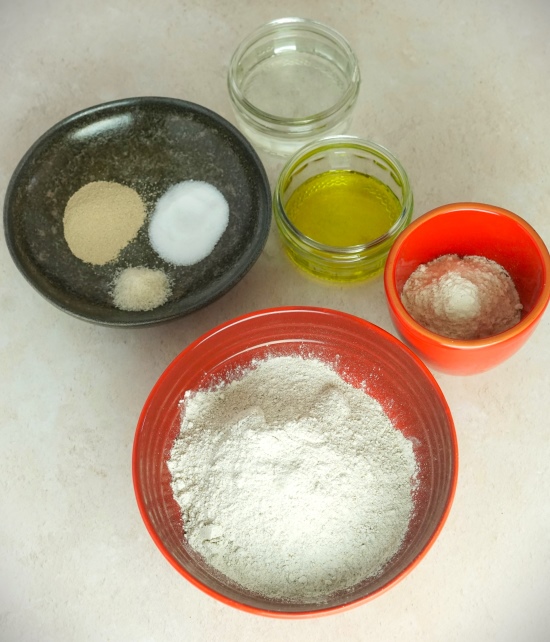
The rest of the ingredients are the same as for my original easy cracker recipe: flour, salt, olive oil, and water. The flour is made up of seventy-five percent wholemeal rye flour and twenty-five percent white bread flour. I use white bread flour as this is higher in gluten that plain white flour. In the recipe card at the end of this post, I’ve given amounts that will make two trays of crackers.
Start by stirring together the flours, yeast, salt, and sugar, then gradually stir in the olive oil and warm water. These are brought together into a soft dough which you briefly knead just enough to form into a smooth ball.
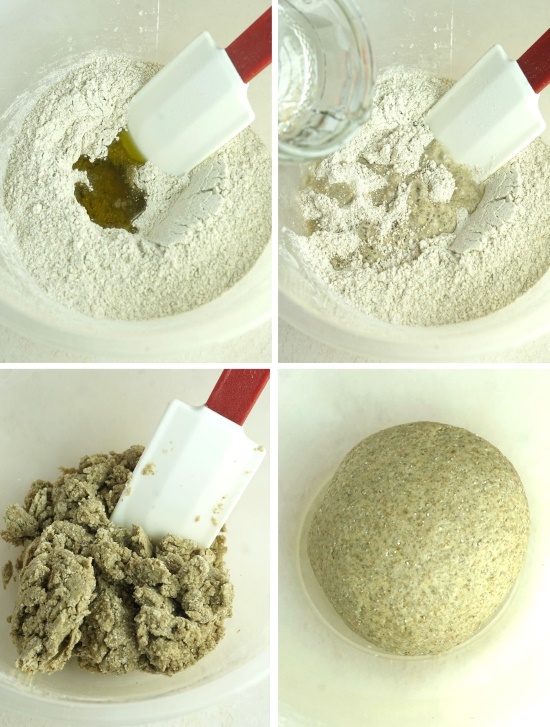
You then set this aside in a warm place for about an hour or until it feels a little puffy when you gently press it. Don’t expect the dough to rise dramatically like most bread doughs. It won’t, due to the high proportion of rye flour. All we’re looking for is a little lightness.
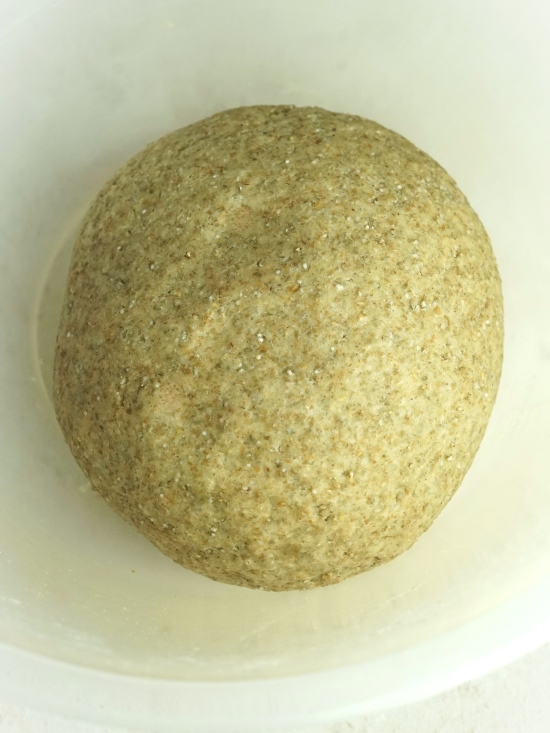
ROLLING & CUTTING OUT
The most important step in getting crunchy rather than hard crackers is to roll the dough very thinly. I’m talking 1 – 2 mm and no more. The best way to ensure this is to roll out onto baking paper you’ve cut to 31 x 21 centimetres. Divide the dough in half (I use scales for accuracy) then roll out one piece to completely cover the correctly sized paper. At first, you might think it’s never going to reach. But trust me. I’ve done it many times and, if you keep going, you’ll get there.
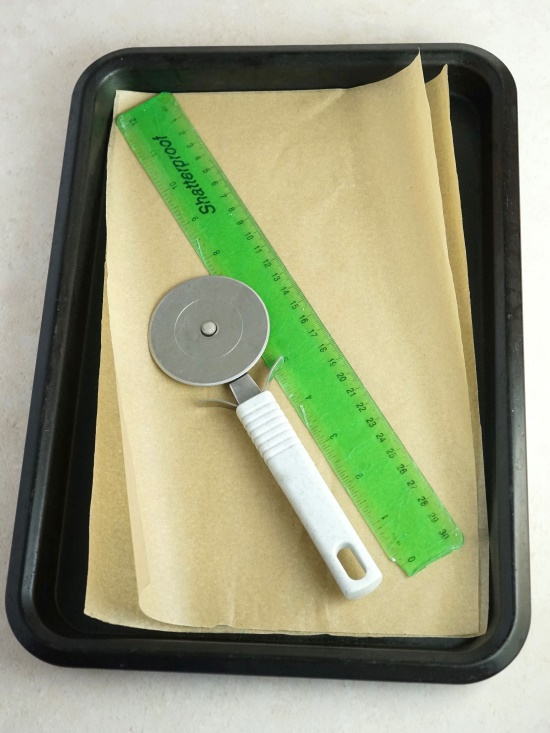
I neaten the edges with a pizza wheel guided by a ruler, then cut the dough into crackers. You can make whatever shape and size you like; I prefer 9 rectangular crackers per tray, approximately 10 x 7 centimetres each. You then slide the paper onto a baking tray and prick the crackers all over with a fork. If you’ve two trays, then roll and cut the second piece of dough. Otherwise, cook them in two batches.
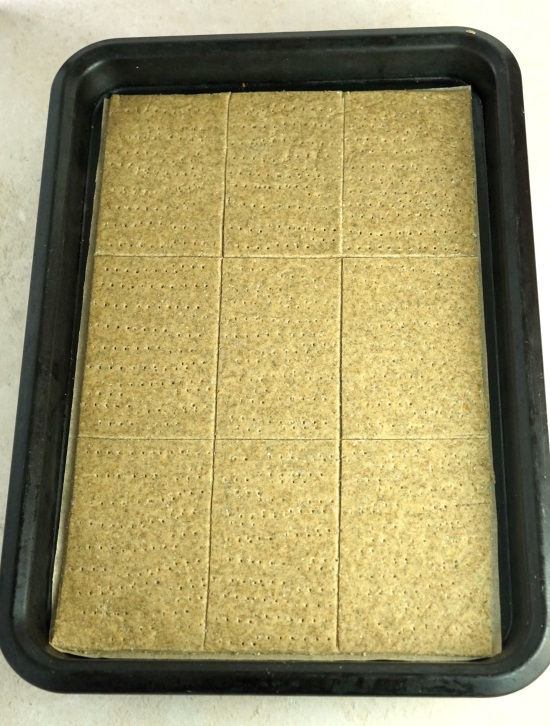
Thin crackers tend to curl up a little as they bake, especially if you’ve cut the dough all the way through. This won’t affect the taste, but there’s a little trick I do when I want flatter homemade Rye Crackers. Before transferring to the oven, I cover them with a larger sheet of baking paper then put another baking tray on top. Make sure the top tray isn’t too heavy; we don’t want to squash the crackers underneath.
Note: Knäckebröd is often cut into circles with a hole in the middle. This was originally so they could be threaded on a pole and dried out for long-term storage. However, it’s much quicker to cut into squares or rectangles.
BAKING
The crackers should take 15 – 20 minutes to get cooked all the way through. I prefer them dark brown, but you can bake for the shorter time if you want them a lighter colour. If you’ve added the extra tray to stop them curling, you can remove this for the final few minutes.
However, whether you’ve used the extra tray or not, I recommend you check after 10 minutes. If your oven is like mine and cooks rather unevenly, you might find some of the crackers at the corners or edges of the tray are already done. Remove these to a cooling rack and return the rest to the oven. Again, if your oven doesn’t cook evenly, you can turn the crackers over halfway through and/or swap which shelves the trays are on if baking both at once.
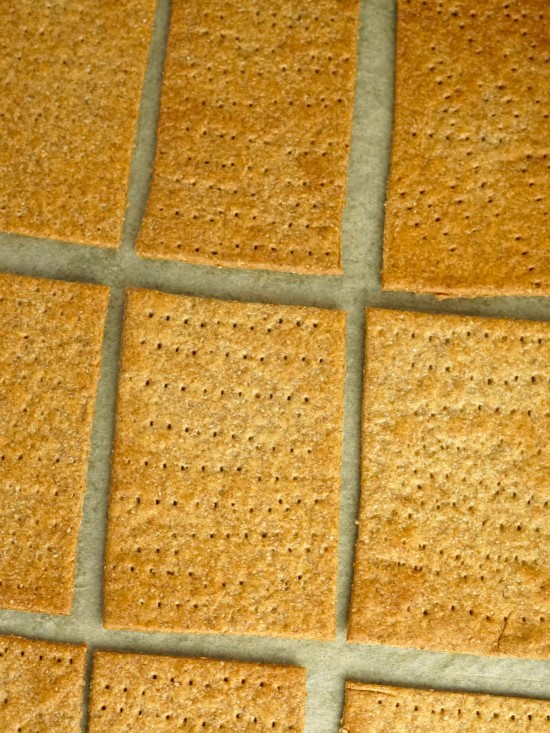
When done, leave the crackers on the cooling rack until completely cold before storing in an airtight container.
Tip: Don’t throw the baking paper away. I reuse mine several times. Apart from being less wasteful, next time you’ll have sheets already cut to the right size.
EASY RYE CRACKERS
Unlike most of my homemade crackers, these Rye Crackers do include yeast and the extra step of proofing. But they’re still pretty quick to make. In any case, I think it’s so worth it for the nutty, wholesome flavour that a good proportion of rye flour brings. This makes them perfect for eating with cheeses, pâté, and dips of all kinds.
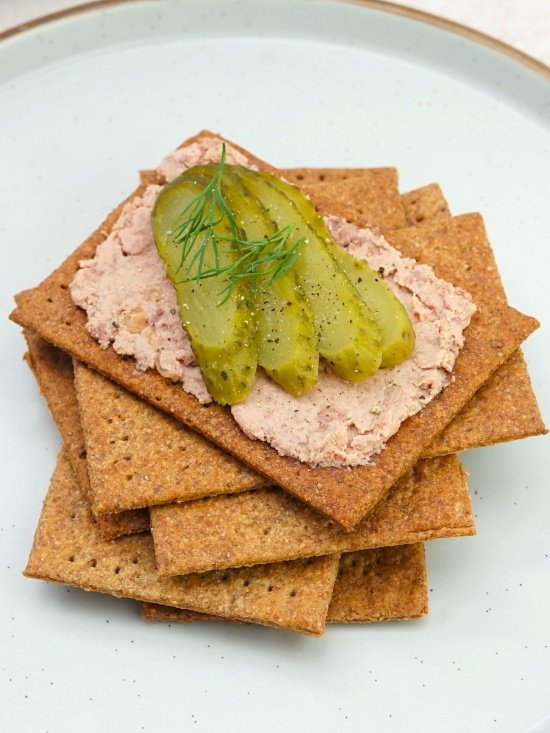
And don’t forget combinations with fruit either. I love them spread with lightly salted, sugar-free peanut butter then topped with blueberries or sliced banana and a sprinkle of cinnamon.
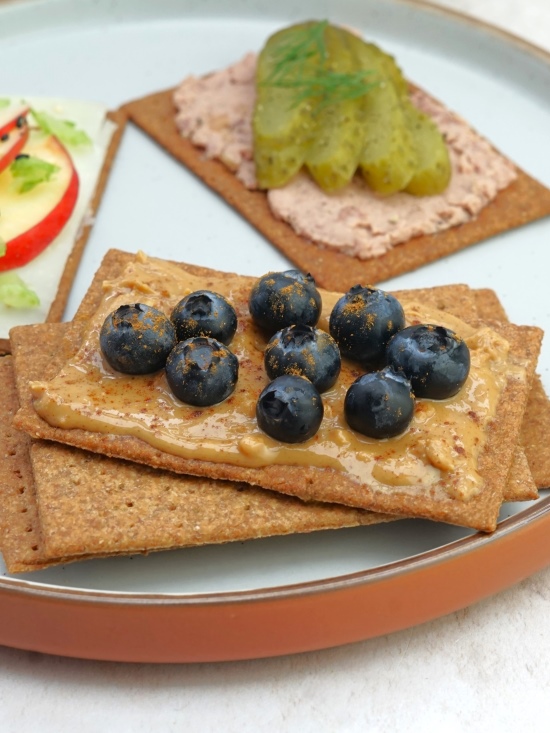
Homemade Rye Crackers are also a quick alternative to Dark Rye Bread if you fancy more elaborate toppings. I can easily make a batch in the morning, ready for a satisfying lunch. Take a look at my post Smørrebrød: Danish-Style Open Sandwiches for lots of ideas.
These nutritious, tasty, and crunchy crackers should keep for at least a month, so feel free to make a double batch and tuck them away for a quick, healthy meal or snack.
IF YOU’VE MADE MY RYE CRACKERS, DO LEAVE A COMMENT & RATING TO LET ME KNOW WHAT YOU THINK
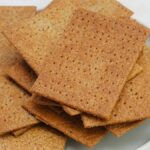
Homemade Rye Crackers
Thin, crunchy, and full of flavour, these easy Rye Crackers are inspired by Nordic knäckebröd.
Enjoy as a snack or simple cracker with cheese, pâté, dips, and spreads, or use as a base for open sandwiches piled with tasty toppings.
So that the crackers are crunchy rather than hard, roll the dough no more than 1 - 2 mm thick. For best results, read the accompanying blog post before starting the recipe.
Ingredients
- 150 g wholemeal rye flour
- 50 g white bread flour
- 1 tsp instant dried yeast (i.e. the type that does not need activating before adding to the flour)
- 1 tsp salt
- ½ tsp sugar
- 20 ml olive oil
- 100 - 120 ml warm water (see Recipe Notes)
Instructions
-
Put both flours, the instant dried yeast, salt, and sugar into a mixing bowl. Stir together then make a well in the middle.
Pour the olive oil into the well then gradually add 100 ml of the warm water, stirring as you do so, to start bringing together a soft dough that leaves the sides of the bowl clean. If it seems a little dry, add a little more of the warm water but the dough should not be wet.
Put the dough onto a clean work surface or silicone mat and briefly knead into a smooth ball.
-
Put the dough back in the bowl and cover with cling film, a tea towel, or put the bowl into a polythene bag.
Put in a warm place for 60 minutes or until lightly puffy when you gently press it: don't expect it to noticeably rise as, due to the rye flour, it won't.
-
While the dough is proving
Preheat the oven to 190° C /170° Fan /Gas 5 /375° F.
Cut two pieces of baking paper each 31 x 21 cm to fit the bases of shallow baking trays. Cook in two batches if you only have one suitably sized tray.
-
When the dough is ready, cut it in half (use scales for accuracy).
Take one of the pieces of the baking paper and place half the dough on it. Note that due to the olive oil in the dough, you shouldn't need to add any extra flour when rolling out unless you've made the dough too wet.
Roll out very thinly: no more than 1 - 2 mm or the crackers will be hard rather than crunchy. If you've cut the paper to the correct size, then rolling to this thinness should cover ALL of the paper and go just over the edges.
-
Neaten the edges of the dough with a knife or pizza wheel, guided by a ruler if necessary.
Cut the dough into 9 rectangles approximately 10 x 7 cm each (or your preferred shape and size), then slide the paper and crackers onto a baking tray.
Tip: not cutting all the way through the dough can prevent them curling up during cooking. However, they may break unevenly if you have to snap them apart after baking. See Step 7 for an alternative.
Prick each cracker all over with a fork.
-
Repeat with the remaining dough (or cook one tray first, then roll and cut the remaining dough).
-
Baking the crackers
Optional: to prevent the crackers curling during baking you can cover with a larger sheet of baking paper and put another tray (not too heavy) on top. Remove for the final 2 - 3 minutes.
Put the tray(s) in the oven and bake until cooked all the way through. This should take 15 - 20 minutes depending on how dark you'd like them, but check after 10 minutes as crackers at the edges and corners of the tray may cook much quicker (remove these to a cooling rack and return the rest to the oven).
If necessary, turn the crackers over for even cooking and/or swap which shelves the trays are on if cooking both at once.
-
When done, crackers should be left on the cooling rack until completely cold before storing in an airtight container.
Should keep for at least a month.
Recipe Notes
Knäckebröd. This recipe was inspired by the knäckebröd of Sweden and Finland. These are often cut into circles with a hole in the middle, originally so they could be threaded on a pole and dried out for long-term storage. However, it's much quicker to cut into squares or rectangles.
Warm water. The ideal temperature for yeast to work is 38 degrees Centigrade. If you don't have a thermometer then use water that feels just pleasantly warm to your finger. If in doubt, err on the side of cooler: the yeast will take longer to work, but that's preferable to killing it with water that's too hot.
RELATED RECIPES

